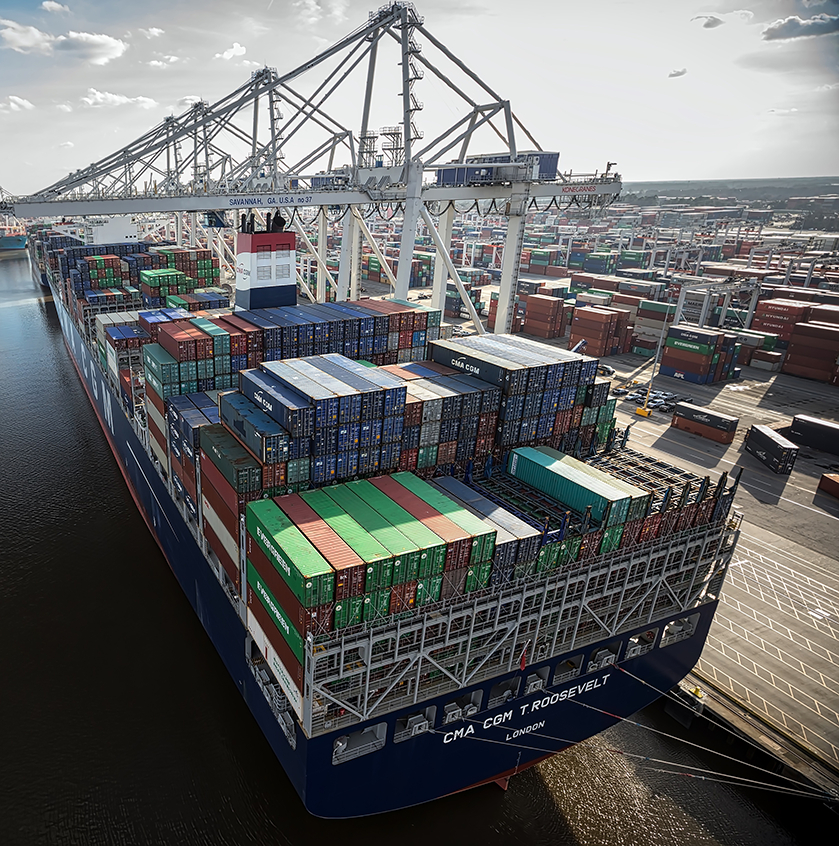As the 2021 holiday shopping season continues, consumers are once again finding shelves empty, from simple products like cream cheese and sports drinks, to complex goods like cars and appliances. The reason? Supply chain disruptions.
While many people have heard the term “supply chain” and know it is the reason behind many product delays, most do not realize the complexity — and fragility — of our global supply chains. Problems like these are at the heart of industrial engineering, and the experts at the No. 1-ranked H. Milton Stewart School of Industrial and Systems Engineering (ISyE) at Georgia Tech are sharing their expertise with companies and federal and state leadership to help remedy the current problem and help ensure it does not happen again.
“Supply chains are incredibly complex and completely international,” said Pascal Van Hentenryck, A. Russell Chandler III Chair and Professor in ISyE. “They include container ships, warehousing, docking, trucks, trains, and planes, in addition to first- last- and middle-mile transportation. The current situation affects all these aspects. It is a massive problem. It’s not just one element.”
Behind the many systems involved, there are people making decisions and collaborating to ensure each segment is operating effectively and efficiently to keep the supply chain operating smoothly. This includes production, sourcing of raw materials, supply replenishment, and logistics. If one of these segments breaks down, the entire system will collapse. This process occurs for nearly every product available, leading to millions of supply chain transactions occurring globally each day.
Why are we Still Experiencing Delays?
When the Covid-19 pandemic took hold of the world in 2019, there were multiple disruptions to the system in addition to a dramatic increase in ecommerce, which created significant first- and last-mile issues. According to Van Hentenryck, this put additional strain on factories, ports, ships, and logistics companies that were already experiencing workforce shortages. In addition, many supply chains were highly optimized, just-in-time systems which allowed very little room for error or disruption. Nearly two years later, we are still feeling the impact.
“Everybody at every layer of the supply chain was hit by the pandemic in some manner,” adds Benoit Montreuil, Coca-Cola Material Handling & Distribution Chair and professor and co-director of the Supply Chain & Logistics Institute at ISyE. “Some companies still do not have enough employees to get the work done, while others have depleted their reserves or cannot source the necessary materials to manufacture their products. We have now seen that the lean approach has proven to be extremely dangerous.”
While this holds true for all supply chains, fresh foods and complex electronics are even more fragile.
The short shelf life of fresh goods, like meat and produce, collapses the entire process into the span of just a few weeks and adds another layer of complexity to the situation. Montreuil says that, for products like these, empty shelves are not necessarily due to a lack of supply, but rather a breakdown in processing plants or shipping.
Complex products have more complicated supply chains. For example, when it comes to electronics and cars, many of the components are being manufactured in different sites around the world before being sent to another location for assembly. If one of the many parts is missing, the product cannot be manufactured. This is the case with the current computer chip shortage that is affecting the supply of phones, appliances, computers, and other everyday items we take for granted. The shortage is a result of increased demand, depleted reserves, and lack of the manufacturing plants and workers to increase production.
“Like many other items, the demand for computer chips was increasing before the pandemic, and the industry was struggling to keep up,” said Chelsea White, Schneider National Chair in Transportation and Logistics and professor at ISyE. “The increased demand for personal computers, video conferencing equipment, and other electronics that use hundreds of computer chips put an even greater strain on production. Unfortunately, this industry requires a large capital expenditure for a new foundry and is not agile. It takes years and billions of dollars of investment to build the specialized plants required to make more chips. This mismatch of demand and supply will not be remedied quickly.”
In addition to production issues, there is also an extreme worker shortage in shipping and logistics, making it difficult to get products to consumers once they are assembled. For example, the American Trucking Association said the industry has a shortage of 80,000 drivers and estimates this number could more than double by 2030. Similar issues at the ports and on container ships are also causing significant shipping delays. Lack of integration among the many shipping components intensifies the problem.
“Containers are coming into the ports, but there are no trucks there to pick them up, because they are not ready for them,” explained Van Hentenryck. “Meanwhile, these containers are taking up space in the storage yard, so additional containers cannot be unloaded, because there is nowhere to put them. These are the kinds of issues the lack of integration causes.”
Solving the Problem
While the intricacy of the current supply chain problem is making it difficult to fix, experts believe it can be done. Companies will need to look at their processes through a new lens and modify them to resolve the current situation and prevent similar disruptions from happening in the future.
“Historically supply chains were organized around cost, but that is probably going to change,” said Van Hentenryck. “They will be built for resilience and flexibility so that they do not get stuck so easily. My intuition is that organizations will start moving away from the just-in-time systems to become more reliable and resilient.”
Montreuil agrees. To increase resiliency, he says companies may want to keep additional stock of key resources, but that the solution is more about changing production capacity and finding creative ways to address transport, warehousing, and resource shortages. “All of this is shaping the ‘new normal’ in supply chain, which I believe will ultimately be much stronger than in the past.”
Technology, including automation, machine learning and optimization techniques, will also be an important tool to address the worker shortages, to increase efficiencies, and to integrate processes.
“Automation allows businesses to create new business models,” said Van Hentenryck. “It can increase efficiency at factories, warehouses, ports, and on the roads while addressing the labor shortages. And, while it will eliminate some jobs, it will also create new, higher paying jobs in their place.”
Van Hentenryck is currently collaborating with Ryder System, Inc. on the trucking industry’s first data-driven study of the potential impact of autonomous trucking and expects similar studies to take place in other areas of the supply chain.
“People are looking for easy solutions, but that is not how supply chains work,” said Montreuil. “The good thing is that the current situation has increased the awareness of the problem, so we can work toward a solution.”
What Will the Future Look Like?
Both Montreuil and Van Hentenryck believe that organizations now understand how fragile the current system is and are working to prepare for future catastrophic events like floods, hurricanes, and other disasters that will also disrupt the flow of goods. While it is impossible to prevent pandemics and disasters from occurring, our systems should be resilient enough to handle them and keep goods moving.
“Companies are starting to think about their supply chains in a different way,” said Montreuil. “They are thinking about agility, adaptability, and optionality which is necessary to prevent these problems from occurring in the future.
“What this has shown us is that supply chains are immensely critical to the wellbeing of society and the economy. It has been unseen for decades, and Covid has shown how important they are,” said Montreuil. “It is also important to understand that even though we are suffering, the disruptions we are experiencing are minor compared to the disaster that it could have been.”
For More Information Contact
Laurie Haigh Communications Manager



